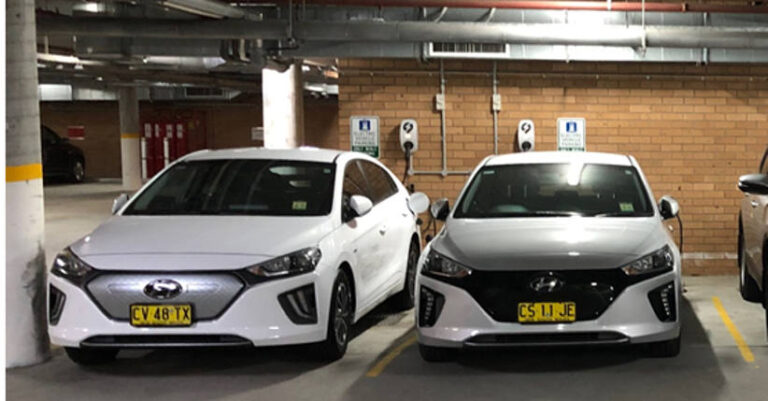The transition to electric vehicles is being treated like a sprint by many organisations and they soon realise its more like marathon which requires a lot of preparation and planning. Fleet Managers will need to work across the organisation to make sure everyone understands the challenges to avoid the hype being created from the enthusiasm of private buyers (a.k.a. – the cool kids driving a Tesla).
A well planned transition looks at all assets (vehicles and buildings), infrastructure (car parks, building, cables, switch box) and electricity sources (renewable, solar panels, coal fired, home charging).
The Central Coast Council has developed a 10 year plan to gradually transition which is aligned to the NSW Government’s ‘Electric & Hybrid Vehicle Plan’. Now in the third year of the implementation, they are benefiting financially as pump prices hit record levels with their fleet of electric and hybrid vehicles.
Council’s long-term strategy to transition its light commercial and passenger vehicles to an EV fleet, is also in line with the and aims to leverage benefits as outlined in a 2020 ‘Uncovering the hidden costs and benefits from Electric Vehicles’ report by EY for the Electric Vehicle Council.
Council Director Corporate Affairs and Chief Financial Officer, Natalia Cowley said Council’s decision to invest in EVs over the medium to long term is already paying early dividends both from a financial point of view, as well as the opportunity to upskill Council employed mechanics in a relatively new field of ‘high-voltage’ servicing and maintenance.
“In the last 12 months the cost of fuel for our fossil-fuelled fleet has skyrocketed and is expected to continue to rise. We also expect this impact will see the demand for EVs in the wider community grow. Our current 10-year plan, which started three years ago, is aimed to ensure that we are gradually transitioning our fleet to EVs, as our budgets and available technology allow for in a responsible and sensible year-on-year manner, rather than having to purchase them all at once at a time in the future when many other fleets will be seeking to do likewise,” Ms Cowley said.
Council now has several ‘smart’ charging stations at different Council sites, with features that allow EVs to be charged off-peak. In the future, vehicle-to-grid charging capability may be explored.
“Increasing the number of charging stations has been a focus in the last 12 months to ensure our EV assets perform just as well as their fossil fuelled counterparts in real world scenarios, and that we get maximum use and value from our EV and hybrid fleet. Council’s fleet includes a hybrid 20-tonne excavator, a first-of-kind in NSW local government full battery electric tipper truck, six hybrid electric trucks, nine full battery electric passenger vehicles and 112 hybrid electric passenger vehicles.
“Each hybrid or electric vehicle introduced to date has displaced a full fossil-fuelled vehicle that had reached its end of service life and we look forward to the next addition to our fleet due to join in July 22, which will be a small Library book community delivery service van.”
Ms Cowley added that Council continues to be active in its commitment for a sustainable future, evidenced also by the recent partnership with five Hunter based Councils to combine selected electricity requirements into a ten-year Power Purchase Agreement.
Council Administrator, Rik Hart said the NSW Government’s 2021 commitment to support local councils and communities in this space remains very welcome.
“Council is continuing to explore funding assistance and subsidies under various programs currently on offer by the NSW Government,” Mr Hart said.
“Council will continue to innovate in a responsible, environmental and strategic manner as we move towards financial recovery, with community benefits including improving air quality and providing local upskill opportunities at the forefront of our planning.”






